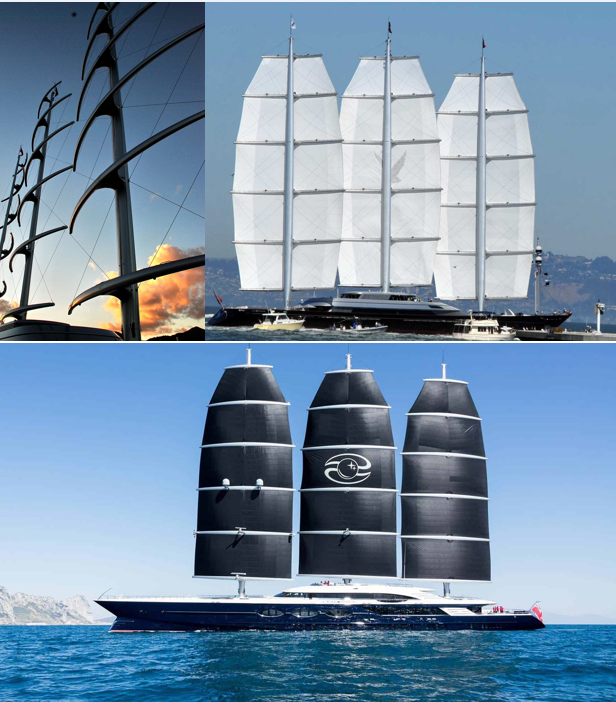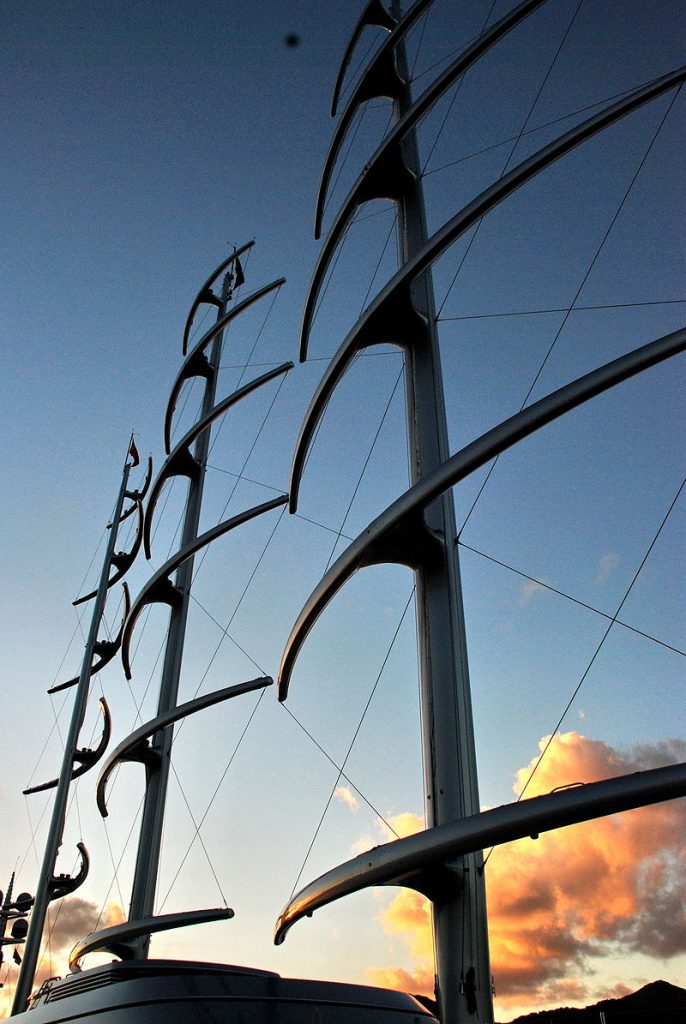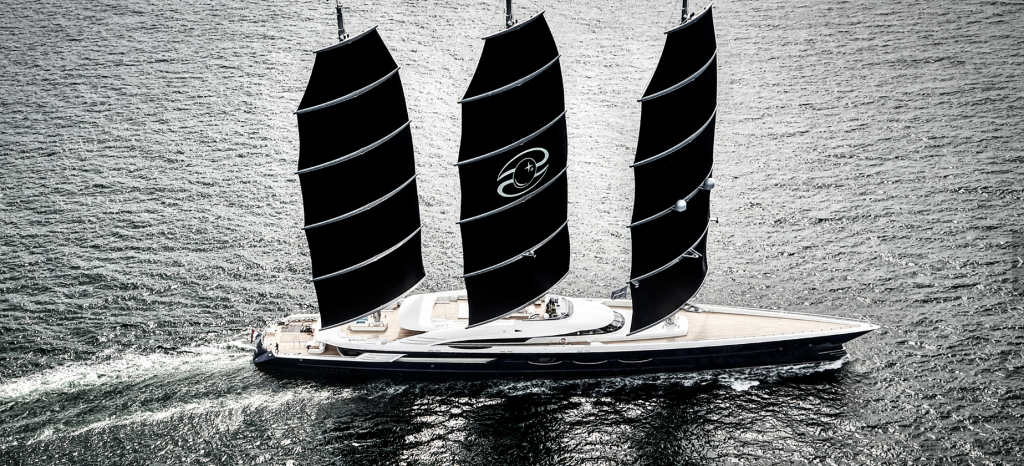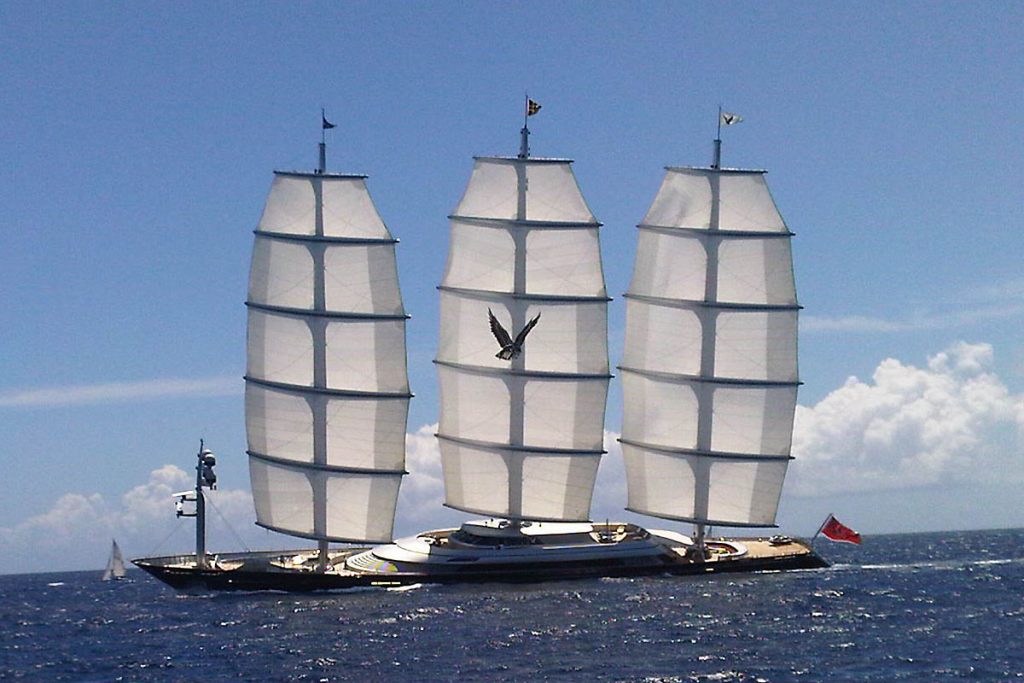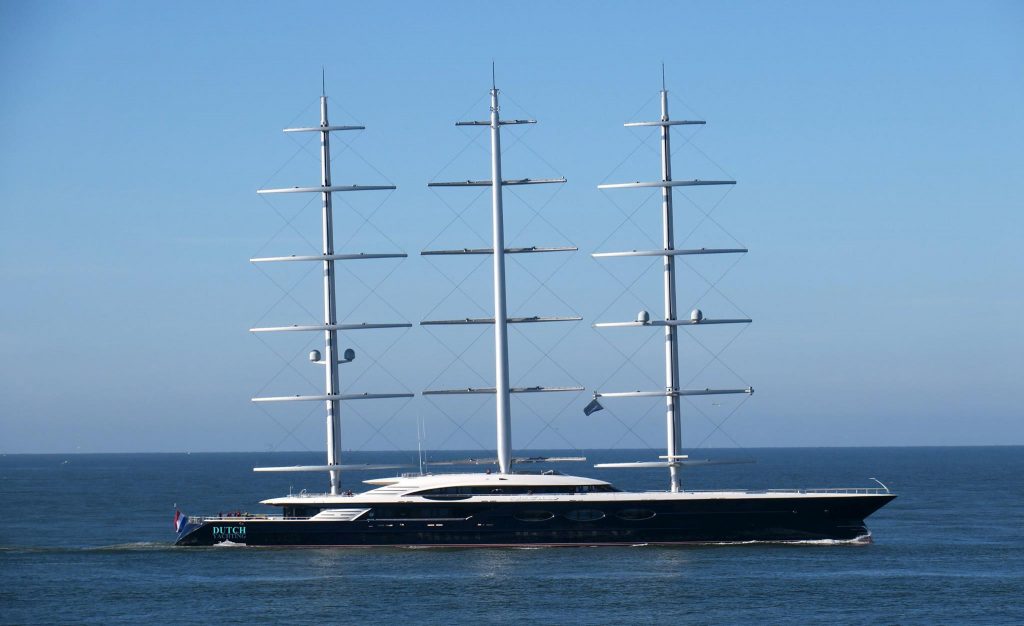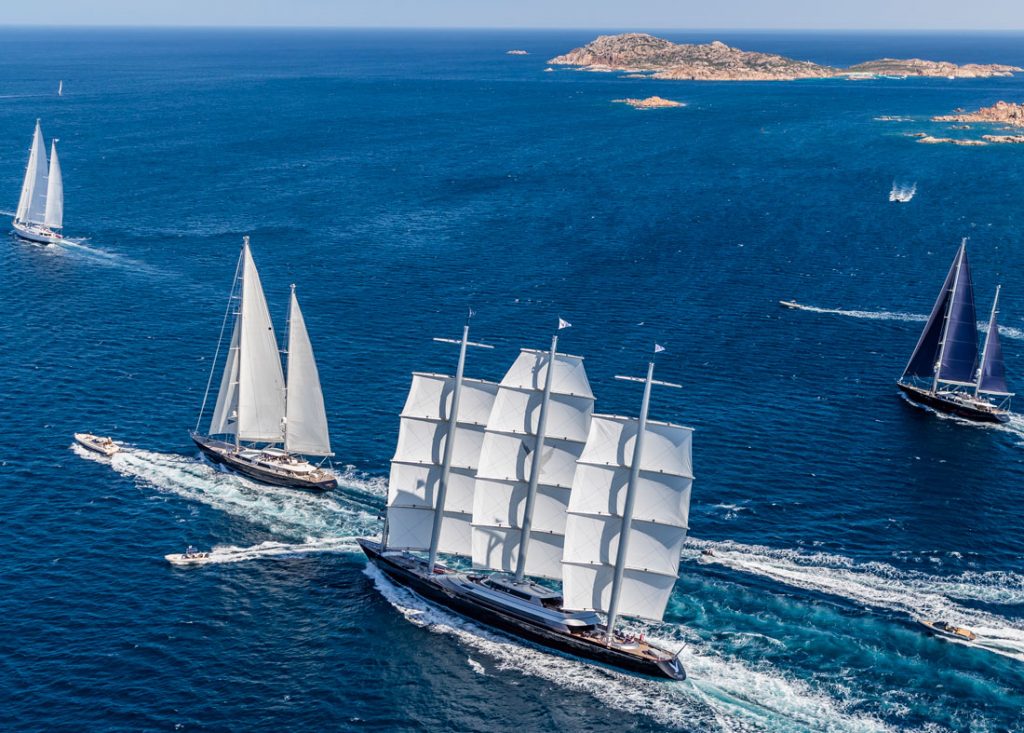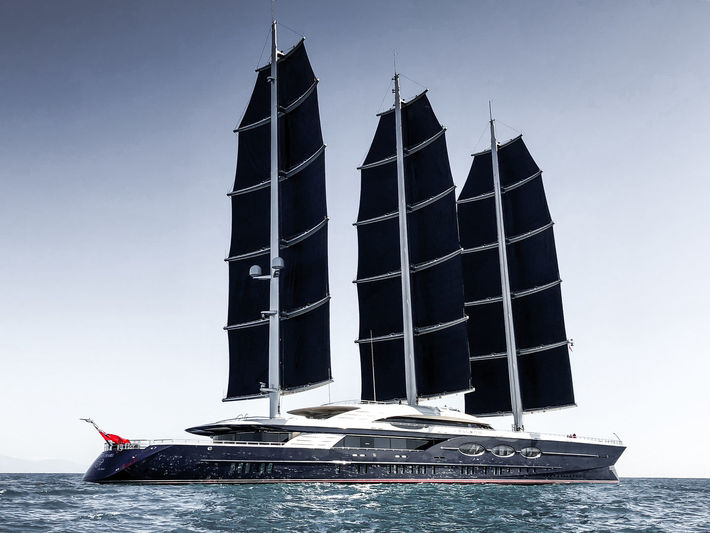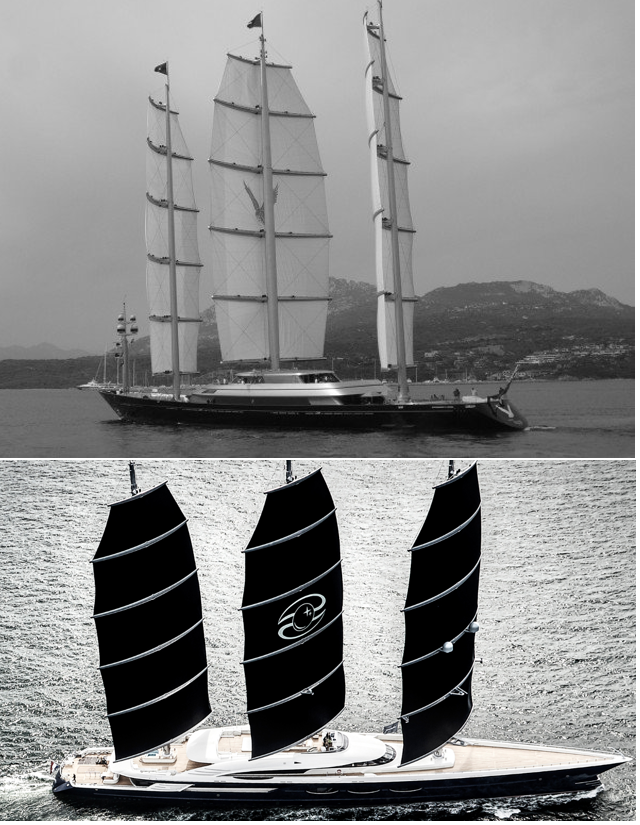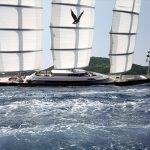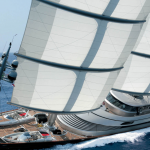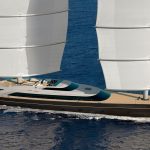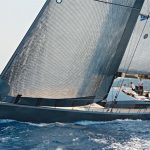
This type of rig was conceived in the early 1960s by the German engineer Wilhelm Prölss who never had the chance to verify its practical construction and for years was one of many projects that existed only on paper. As long as Perni Navi is a leader company for innovations and creativity in the construction of automated sailboats, it has been proposed as an alternative to traditional weapons by its affectionate customer, the electronic engineer Tom Perkins, former president of Hewlett Packard, a very rich computer entrepreneur as an answer to his explicit request “I would like to end my career as an entrepreneur and sailor with something exceptional, something memorable.” “If you are interested, I am willing to collaborate and contribute to a project worthy of your company and its my ambitions “. (Tom Perkins died in 2016 in California at the age of 84)
The engineering challenge to overcome was to build shafts stuck on rotating bases of the smallest possible size to limit the occupied space that would readily follow the wind direction.
The system allows all fifteen square sails to be lowered or deployed in just six or seven minutes in complete safety with total control of the entire sail plan and it is possible that even one person can manage the entire boat.
To tell the truth a certain perplexity arose when the owner of the boat decided to put the Maltese Falcon on sale in 2008 just two years after its launch, doubts that time has completely dissolved.
We must say that the constructions of both the Maltese Falcon and the Blach Pearl have been very complex and have involved an impressive group of naval engineers and architects and specialists for every single element installed and it took at least two years of sea trials to try the opening and closing of all the sails, and also simulate some situation that can be created following an incorrect maneuver to then see the consequences of the damage caused.
Lascia un commento
Devi essere connesso per inviare un commento.

